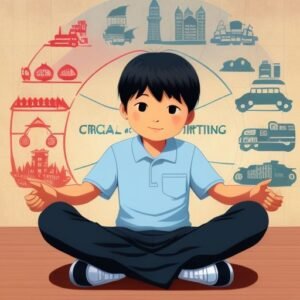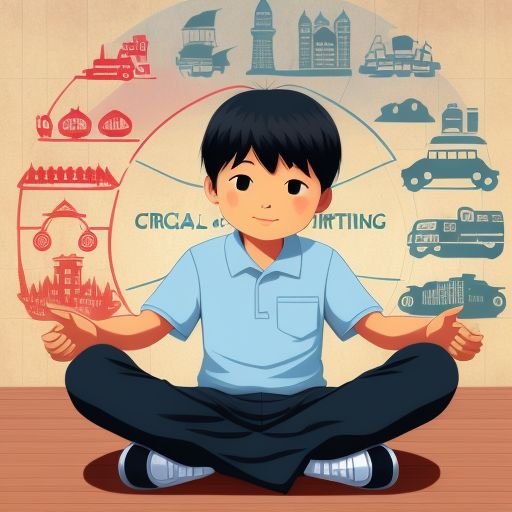Unleashing the Power of Learning: Exploring Educational Escape Rooms in Asia for Enhancing Critical Thinking Skills
Critical Thinking Skills
Introduction
Ever felt lost beneath the pile of books and pages of text with nothing but repeatedly memorized facts? Remember how it felt like you were trying to drink out of a fire-hose, cramming everything without actually understanding? Lost in the black-and-white world of academics, students today are crying out for a fresh, exciting approach to education. Well, the quest for an innovative solution has led us to the unconventional corridors of ‘Educational Escape Rooms’ – an emerging trend in Asia aimed at enhancing critical thinking skills.
In this post, we will delve deep into the heart of these intriguing educational escape rooms, exploring their structure, benefits, and their phenomenal potential in developing critical thinking abilities among students. Along the way, we’ll answer some of the frequently asked questions related to the concept.
Decrypting the Concept: What are Educational Escape Rooms?
Traditional escape rooms are physical adventure games where players solve a series of puzzles and riddles using clues, hints, and strategy to “escape” the room. In contrast, educational escape rooms still maintain the thrill of the game but are designed to simultaneously deliver specific learning objectives.

A Glimpse into the educational escape rooms
- Participants start in a ‘locked’ room.
- They have to solve a series of intellectual challenges to ‘escape.’
- Instead of mere fun, these challenges are designed to instigate learning.
- These games are usually time-bound, adding an element of urgency and competition.
Educational escape rooms veer off the beaten learning paths, to pave the way for experiential, participative, and enjoyable learning.
The Brain Gym: How Educational Escape Rooms Foster Critical Thinking
The power of these educational escape rooms lies in their ability to hone critical thinking skills. But how can a game do what volumes of textbooks fail at? Let’s explore how.
Spiral of Challenges
In an educational escape room, participants face a rapidly evolving set of challenges. This progressive structure encourages logical thinking, problem-solving, and resilience.
Team Dynamics
The group-based nature of escape rooms makes them an excellent vehicle for team collaboration, communication, and shared decision-making.
Real-world Connections
Escape rooms craft scenarios that reflect real-world challenges. They force participants to apply their knowledge practically, helping them establish stronger connections with the concepts.
The Asian Adoption: Pioneering the Move
Asia houses diverse educational cultures, and the introduction of educational escape rooms has been welcomed with open arms, providing a hands-on, engaging alternative to traditional teaching methods.

In the classroom-based escape rooms of Japan or the virtual escape rooms found in Singapore, students experience education in a new light, mastering critical thinking skills while having fun.
Bridging the Gap: Overcoming Challenges
While educational escape rooms hold vast potential, implementation comes with its own set of challenges.
Resources and Infrastructure
Building immersive, engaging escape rooms requires considerable resources – both in terms of design and technology.
Acceptance
In spite of the evident benefits, the shift from traditional to game-based learning might face resistance from educational institutions and parents alike.

The Learning Curve
For teachers, designing and conducting these innovative learning experiences might require significant training and learning.
Frequently Asked Questions (FAQ)
Is the concept of educational escape rooms only viable for schools?
No, the concept of educational escape rooms is versatile. It can be adapted for universities, corporate training, and even public awareness programs.
How can educational institutions implement educational escape rooms?
Implementation requires planning, resources, and training. There are numerous frameworks and success stories available online to provide a structured approach.
Conclusion
It’s time to re-imagine education as a thrilling journey rather than a burdensome duty. Educational escape rooms are just the beginning in a long line of innovative pedagogical practices emphasizing the grooming of critical minds over cramming of facts. Although the road to widespread implementation might be steep, change is always worth it when it carries the promise of bright, critically thinking young minds.

So, are you ready to step into the exciting world of educational escape rooms and embrace the paradigm shift in learning?
Remember, as Carl Rogers, a renowned psychologist, once said, “The only person who is educated is the one who has learned how to learn …and change.”
Source
Learn More – Unveiling the Future of Education: Holographic Teachers and Distance Learning in India




